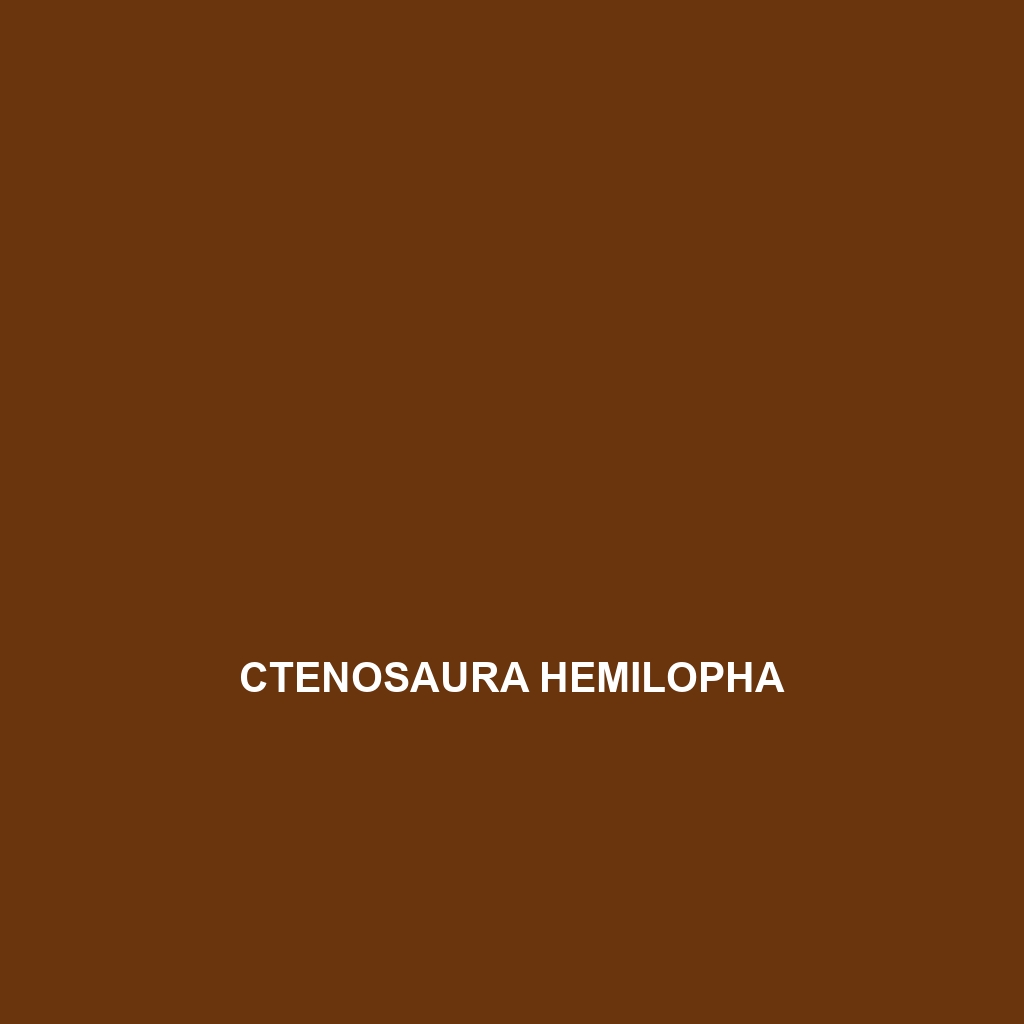Common Name: Ctenosaura hemilopha
Scientific Name: Ctenosaura hemilopha
Habitat
Ctenosaura hemilopha, commonly known as the Black Spiny-tailed Iguana, is primarily found in the dry forests and scrublands of Mexico and parts of Central America. This species thrives in environments that offer ample sunlight and rocky terrains, often inhabiting areas with dense vegetation and near water sources, which are crucial for its survival.
Physical Characteristics
This species can reach an average size of up to 3 feet in length, with males generally larger than females. The coloration of Ctenosaura hemilopha ranges from a deep black to dark gray, often featuring lighter stripes along its back. Its distinctive features include a robust body, a long tail covered with spines, and sharp claws adapted for climbing and burrowing.
Behavior
Ctenosaura hemilopha exhibit a variety of behaviors, including basking in the sun, climbing trees, and engaging in territorial displays. Their social structure often includes dominant males displaying their size and strength to deter rivals. Additionally, this species is known for its burrowing habits, which help them escape predators and extreme temperatures.
Diet
The diet of Ctenosaura hemilopha primarily consists of leaves, flowers, and fruits, making it an herbivorous species. They may also consume insects and small invertebrates, which provide essential nutrients. This dietary versatility allows them to thrive in various environments, especially during seasonal changes when food sources fluctuate.
Reproduction
Ctenosaura hemilopha typically breeds during the warmest months of the year, with egg-laying occurring from late spring to early summer. Females can lay between 5 to 10 eggs in nests dug in sandy soil. The incubation period lasts approximately 2 to 3 months, after which hatchlings emerge, fully independent and capable of surviving without maternal care.
Conservation Status
Currently, Ctenosaura hemilopha is classified as vulnerable due to habitat loss, illegal pet trade, and environmental changes. Conservation efforts are crucial to preserving their populations and natural habitats, which face increasing threats from urbanization and agriculture.
Interesting Facts
One fascinating fact about Ctenosaura hemilopha is its ability to drop its tail when threatened, allowing for a quick escape from predators. This remarkable adaptation helps them evade danger but can hinder their mobility until the tail regenerates. Additionally, their vibrant coloration makes them popular in the pet trade, further emphasizing the need for conservation awareness.
Role in Ecosystem
Ctenosaura hemilopha plays a crucial role in its ecosystem as both a herbivore and prey for larger predators. By consuming plant material, they contribute to seed dispersal and plant community dynamics. Their presence supports biodiversity, while their decline can significantly impact the ecological balance within their native habitats.
